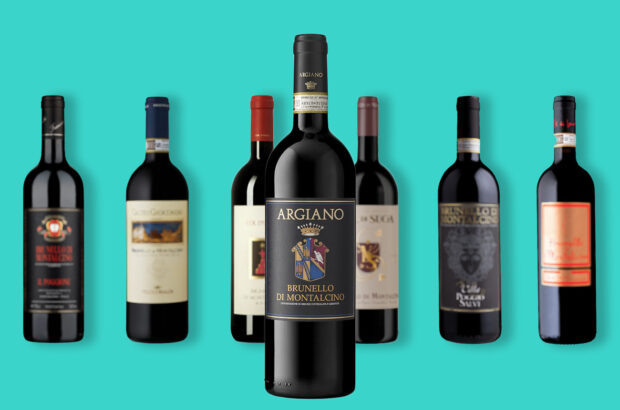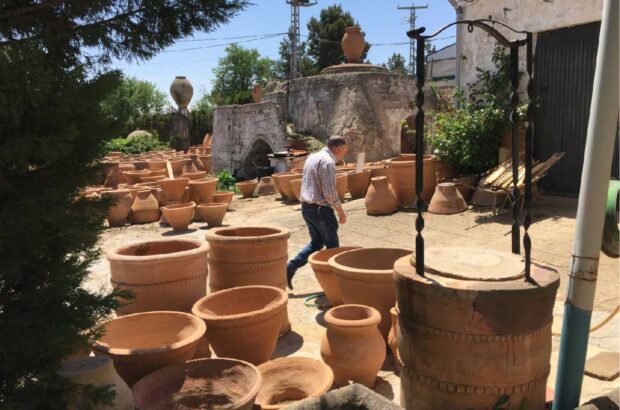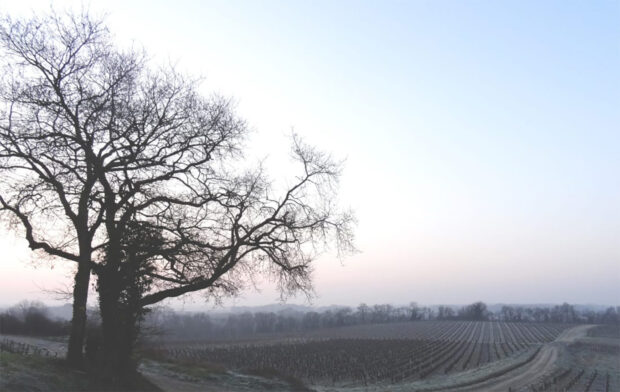- With widespread investment in those vital modern accoutrements stainless steel and temperature control, winemaking is a much less haphazard exercise than it was even a decade ago.
- After nearly a century of corporate body-building, small has once again become beautiful in Portugal.
- Some of the most prominent independent growers have recently formed their own organisation, FENAVI.
It was Hugh Johnson who, in the first edition of The World Atlas of Wine, described Portugal as ‘the place for wine romantics’. In those days it was all too easy to be seduced by the narrow, cobbled lanes with their screeching ox carts and open doorways exuding the heady aromas of freshly grilled sardines and rough red wine. To anyone visiting the north of the country for the first time, the fields and vineyards of rural Portugal appeared to be truly Elysian.
Much has changed since those apparently innocent days of the early 1970s. Half a century of self-imposed isolation came to an abrupt end with a revolution in 1974 and, after a short period of deeply damaging political and economic instability, Portugal re-emerged as a mild-mannered member of the European Union. Brussels set about transforming the Portuguese landscape, both literally and metaphorically. Impressive new roads were driven through the mountains and small industries began springing up, seemingly uncontrolled, among the vines, pines and eucalyptus trees of northern Portugal. Tiny tascas (taverns) selling wine in five-litre garafoes were abandoned in favour of huge out-of-town supermarkets with names like Pão de Açucar (sugar loaf) and Jumbo (no translation needed!). Where 25 years ago stout women would lumber along lanes bearing pitchers of wine on their heads, today’s generation fill their shopping trolleys with bottles and drive home in a hot-hatch at breakneck speed along a brand new expressway.
But for all the progress, Portugal’s romance as a wine producing country is by no means lost and a great deal has been gained. With widespread investment in those vital modern accoutrements stainless steel and temperature control, winemaking is a much less haphazard exercise than it was even a decade ago. From one vintage to the next, wines were literally transformed from hard, undrinkable hooch fit only for the local tasca or Angola to something that is being warmly and widely accepted on export markets. But tempting as it must have been at the time, the Portuguese did not turn their back on their viticultural heritage. Just as the remainder of the world was struck by a fit of collective Cabernet and Chardonnay-mania, the Portuguese (perhaps as much by accident is by design) began to sit up and take notice of their own native grapes. Although there is still much to do in the vineyards, the combination of distinctive, indigenous grape varieties together with greatly improved vinification makes Portugal a real force for the future.
The structure of Portugal’s wine industry is also evolving. For much of this century a centrally imposed ‘big means beautiful’ ethic has robbed Portugal of much of its viticultural diversity. Huge cooperative wineries built in the 1950s and 1960s may have been state-of-the-art at the time but by the 1980s they were holding the country back. The Dão region is a case in point. Billed as the source of some of Portugal’s finest reds, buyers and consumers quickly found that the wines rarely (if ever) lived up to expectations. The coops that held a stranglehold on the region’s winemaking until the early 1990s were responsible for a long-term decline in the quality of Dão wines. Thanks to some pretty forceful monopoly-busting on the part of the EU, power has now been handed back to the growers.
So, after nearly a century of corporate body-building, small has once again become beautiful in Portugal. Helped by generous loans and grants from Brussels, small farmers who once had little option but to sell their grapes to the local coop are now coming out on their own. Some of the most prominent independent growers have recently formed their own organisation, FENAVI (the National Federation of Independent Growers). This is a country-wide association of single estates producing and bottling wines entirely from fruit grown in their own vineyards. With its own strict rules, FENAVI is helping to reinforce the gradual move throughout Portugal to a situation where a growing number of producers are in complete control of their own grapes. This is crucial in a country where many small growers have been brought up with a ‘like it or lump it’ approach to the sale of their fruit; an attitude that has been fostered by most of the large cooperatives who rarely reward quality.
FENAVI is presided over by António Vinagre, who produces light, fragrant Vinhos Verdes from Quinta do Tamariz, his family estate near Barcelos in the heart of the Vinho Verde region. Vinagre was one of the first to dispense entirely with the pergola training system and his vineyard is now mainly given over to Loureiro which, with the exception of Alvarinho, is Vinho Verde’s most distinctive grape.
Vinagre is ably supported by Luis Pato who, for years, has been banging the drum for single estate wines and is now secretary of FENAVI. Pato (the name means ‘duck’) farms 62 hectares (ha) of vineyard around his home at Ois do Bairro in the Bairrada region. With 23 different vineyard plots Pato has developed his philosophy around the French concept of terroir, a word which as yet has no direct translation into Portuguese. He is forever comparing wines from different ‘sandy-clay’ and ‘chalky-clay’ soils, all of which can be quite confusing with his expanding range of wines, some of which are bottled in tiny quantities. Pato reserves the sandier soils for his white wines and lighter reds with heavier clay soils for more full-bodied reds from the Baga grape. Thus Quinta do Ribeirinho is a light, early maturing red with a small amount of Touriga Nacional to ameliorate the Baga, whereas Vinhos Velhas is a full, uncompromisingly solid wine blended from old, low yielding vineyard plots. In exceptional years like 1995, wines from three plots are bottled separately. With yields as low as eight hl/ha, wines like the extraordinary Pé Franco are spellbinding for their sheer concentration of liquorice and cassis-like fruit.
FENAVI’s treasurer is Manuel Pinto Hespanhol, who farms Quinta de Calços do Tanha, a traditional, terraced Douro vineyard just upstream from Régua. Hespanhol continues to supply Port to major shippers, but after a complete revamp of his cellars (noted for their beautifully tiled lagares) in 1989, he began making his own red and white Douro wines. Made mainly from Tinta Roriz, Touriga Francesa and Tinta Barroca (three of the top five Port grapes), his reds are firm, focused and fruit-driven. A few kilometres downstream another FENAVI member, Domingos Alves e Sousa, runs five properties in the Douro which used to supply Port shippers Ferreira. Like Hespanhol, he began looking at the production of Douro table wine towards the end of the 1980s and eventually singled out the 17ha Quinta da Gaivosa near the town of Santa Marta Penaguião for the production of his finest, most serious wine which is aged in new Allier and Portuguese oak. Gaivosa has since been joined by Quinta da Estaçao, aged in second year wood and the deliciously sappy-spicy Quinta do Vale de Raposa. A varietal Touriga Nacional from the successful 1997 vintage will shortly join the Alves e Sousa trio.
Within sight of the River Douro but well outside boundaries of the demarcated Douro region, Quinta de Covela has decided to break with tradition and go its own way. Proprietor Nuno Araujo has planted 30ha of vineyard with Touriga Nacional and Perna de Perdiz (‘partridge leg’) among the reds and the local Vinho Verde Avesso for the whites. To this already rather eclectic Portuguese mix he has added Cabernet Sauvigon, Merlot, Chardonnay, Gewürztraminer, Viognier and Sauvignon Blanc. Amazingly enough this extraordinary combination works and Covela is producing four fascinating fruit-driven wines (two whites, a red and a rosé). In each case the international varieties show through over and above the local Vinho Verde and Douro grapes.
Quinta de Sães has become a symbol of the rejuvenation of the Dão region, for so long dominated by dreary cooperatives. Having thoroughly revamped the winery back in 1989, former civil engineer Alvaro Figueiredo e Castro took the family property away from the cooperative at Vila Nova da Tazem which traditionally supplied Portugal’s largest wine producers, Sogrape, with wine for Dão Grao Vasco. The vineyards at Sães are over 30 years old and planted with premium red varieties like Touriga Nacional, Jean, Alfrocheiro and Tinta Roriz, with whites made from the promising Encruzado and Borrado das Moscas (which translates into English as ‘fly droppings’). Both wines have an air of restraint and sophistication about them, qualities which have been badly lacking in Dão for many years. The white Sães is fresh, grassy and slightly herby, the reds are tight and concentrated with a touch of new oak. With wines as finely crafted as these Quinta de Sães is surely destined to become one of Portugal’s leading single estates.











